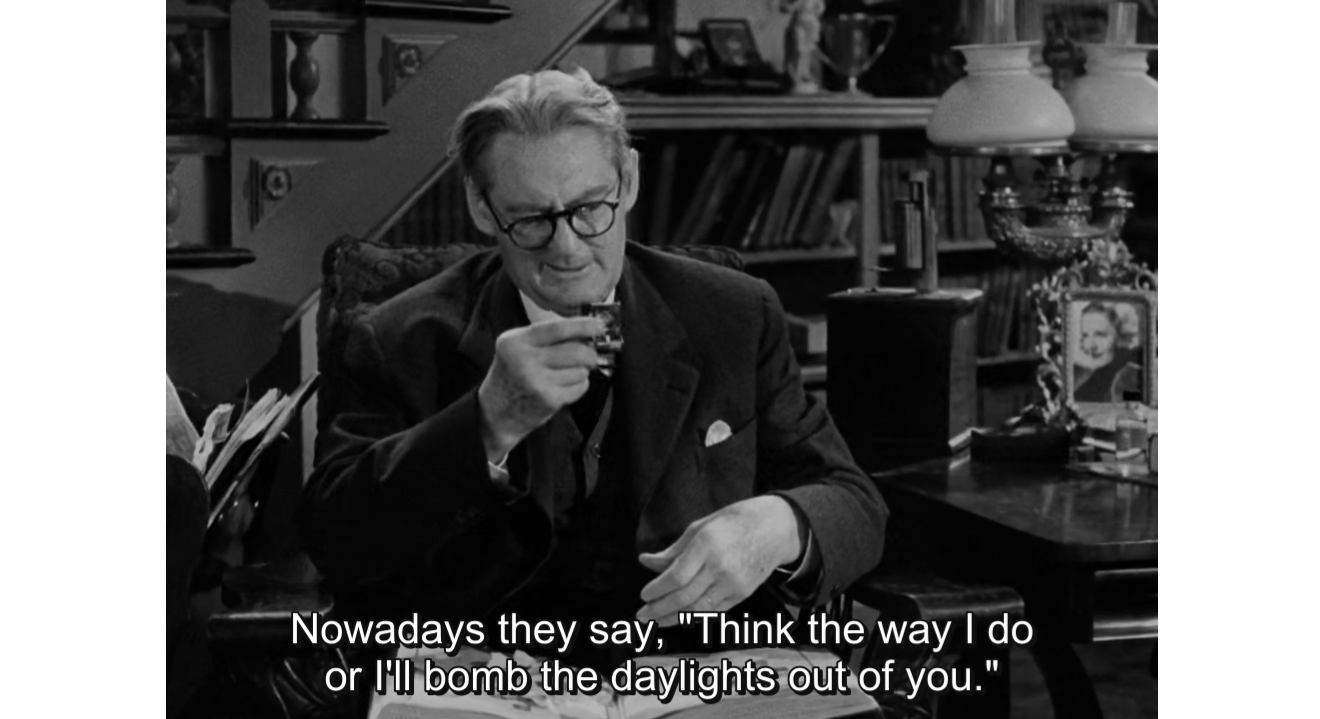
The Devil-Doll (Tod Browning, 1936)
Ah, Tod Browning, king of the cinematic macabre. He after all brought to us the cinematic representation of Count Dracula that will forever haunt our collective consciousness. The year later, he released a film that featured the most grusome, grotesque and visually unappealing freaks. The release of his 1932 Freaks resulted in a turnaround in Browning's illustrious career. That film was shelved, banned, booed, truncated. It toured the United States like the freaks it depicted, merely a sideshow feature disowned by the studio that gave birth to it. Browning directed a few more films before retiring completely. One of his last features is The Devil-Doll, which is more of a sci-fi revenge tale rather than a horror story of the grotesque and the weird.
The Devil-Doll actually features three characters who are all transformed into grotesque creatures by their personal goals and convictions. Marcel (Henry B. Walthall) has escaped from prison with his prison buddy Paul Lavond (Lionel Barrymore). They inch their way to Marcel's house in a remote island where Marcel seeks to continue his life's passion, which is science. In the house, Marcel's wife Malita (Rafaela Ottiano) has nearly perfected their experimentations on a process that will shrink creatures into a sixth of their original size. However, the drawback is that the brains will shrink too, causing these creatures to lose their memories and other mental functions, allowing them to be mere miniature puppets of their masters who can telepathically order them around. After experimenting with the couple's imbecile servant Lachna (Grace Ford), Marcel dies leaving Malita and Paul to continue his work.
Paul has no intention in pursuing Marcel's scientific experimentations, as he thinks shrinking people is morally wrong. However, he uses Malita to take revenge on the three former bank associates who framed him and caused him to rot in jail for seventeen years. Paul and Malita fly to Paris and devise a plan to suit Paul's goals. Paul dresses up as an elderly toymaker who stalks the three bankers with her "dolls" and tries to win back the affection of his estranged daughter Lorraine (Maureen O'Sullivan).
The three freaks of the film are Marcel, Malita and Paul. All three have been grotesquely mutated by their respective passions: Marcel, with his benevolent yet twisted need to shrink all humanity to solve world hunger, Malita, with her undaunted devotion to her husband's passion, and Paul, with his desperate need to clear his name or just merely clear the world of the three men who robbed him of his fortunes, freedom and his family. All three have different levels of moral perception yet all three are undeniably swallowed by their personal motivations. The effect is a less visual representation, although the white highlights in Malita's hair and the twisting of Paul's facial features spell out evil in bold letters, of evil.
I have some problems with the film. The sideplot involving Paul's relationship with his daughter is touching at first, but when the film culminates with a need to wrap-up the emotional estrangement of the daughter to her criminal father, Browning suddenly falters in visualizing the resolution.
The Devil-Doll is very well-made considering that it was not provided a generous budget. Browning tends to drown in his inability to control dialogue but given a tight script (written by Guy Endore, Garrett Fort and the more famous Erich von Stronheim from a novel "Burn Witch Burn" by Abraham Merritt), and a better cast, you almost feel that Browning has grown up from his dialogue-centered deficiency. The biggest surprise here is that Browning's camera finally moves in a more fluid manner. Browning's usual visual technique is to wonder at his gothic sets or his freaky cast by using static and steady camera positions. Here, his camera follows movement which is probably due to the fact that The Devil-Doll is special effects extensive. The camera follows the miniaturized characters who flawlessly mix with the normal sized men and women to do what they're told: a cinematic wonder decades before Peter Jackson used computers, midgets, and camera tricks to do the same in The Lord of the Rings.
In one of the film's most memorable sequences, one of Paul's dolls drop from a Christmas ornament and with the use of his miniature size, dodges and escapes the vision of the Parisian policemen who are guarding the last remaining banker that Paul wants vengeance from. Browning cuts the sequence from the beautifully rendered special effects of the miniature actor running around giant legs and tables, the facial expressions of a frightened banker who is unaware what he is up against, and a beautiful monstrance that tells both the banker and the audience the time and the reckoning of Paul's death threat. The mixture of special effects, of Browning's ability to handle moments of disbelief and terror, of the excellent cast, and the more stable visuals create an atmosphere that takes away the hokum of the science fiction ploy.




































No comments:
Post a Comment